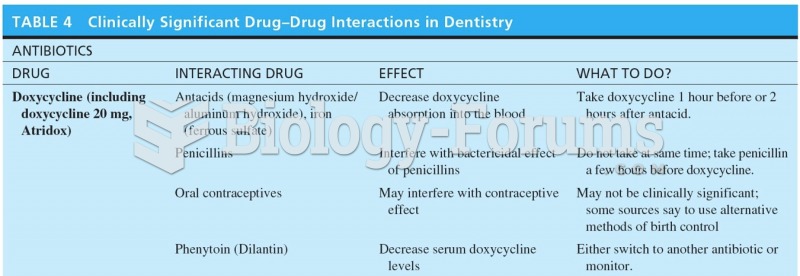Answer to Question 1
ANS: D
Positive urinalysis simply indicates the presence of the drug being tested for in the urine specimen. The person may have a prescription for a substance found in the urine or may have been accidentally dosed with it. Presence of the substance in the urine does not indicate dependence because the person may only be an episodic user of the substance. Asking for the person's permission to collect a specimen and examine it does not violate the person's constitutional rights. The Supreme Court has ruled that drug screening does not violate one's constitutional right to privacy or represent an unreasonable search.
Answer to Question 2
ANS: B
Alcohol withdrawal symptoms can begin within a few hours of discontinuation of drinking and may continue for 3 to 10 days. Withdrawal symptoms may be severe and include visual and auditory hallucinations and tonic-clonic seizures. The patient's admitting diagnosis, GI bleeding, may be associated with alcohol abuse. Denial is a common symptom associated with alcoholism, and the patient may not have been honest about alcohol intake when the health care provider took the history on admission. History may be obtained from the patient's family or significant other. It is unlikely that the blood loss is significant enough to induce seizures. Alkalosis is not likely the cause of seizures in this case; the patient is more likely to be acidotic from the combined dehydration and withdrawal. Common causes in the setting of alcohol withdrawal include alcoholic ketoacidosis and ingestion of alcohols or medications that result in metabolic acidosis (e.g., methanol, ethylene glycol, salicylate). Inadequate nutrition is not likely to cause seizures in this patient.







